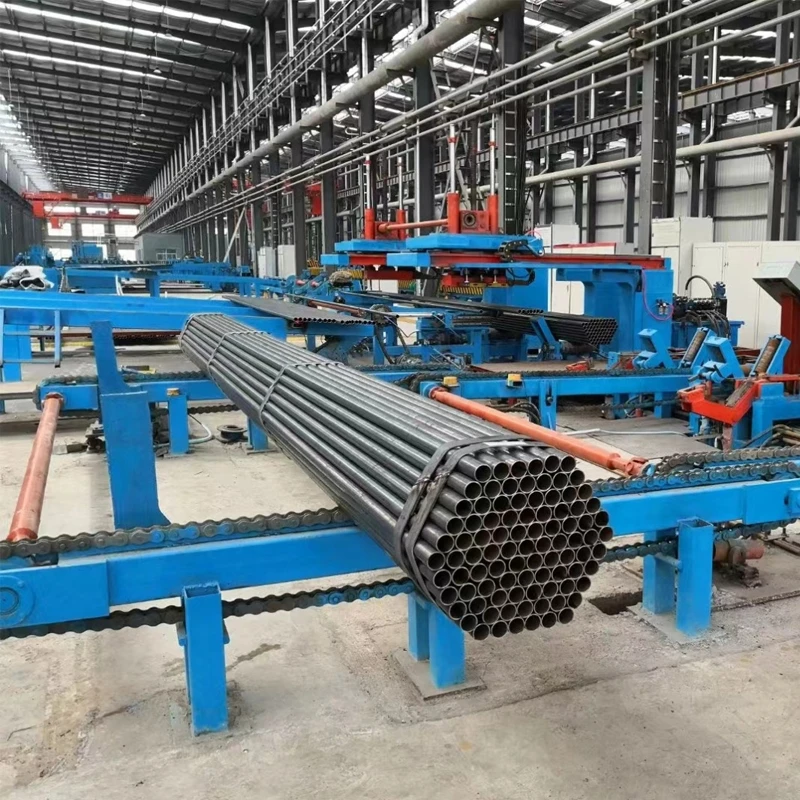trapezoidal roll forming machine
Trapezoidal Roll Forming Machine An Overview
In the realm of modern manufacturing, efficiency and precision are paramount. Among the diverse machinery utilized in metal processing, the trapezoidal roll forming machine stands out for its unique ability to create trapezoidal shapes used in various applications. This machine is not merely a piece of equipment; it symbolizes innovation in forming technology that has revolutionized industries ranging from construction to automotive.
What is a Trapezoidal Roll Forming Machine?
A trapezoidal roll forming machine is a type of equipment designed to produce trapezoidal-shaped metal profiles from a flat strip or coil of material. This process involves feeding a continuous strip of metal into a series of rollers that gradually shape the material into the desired trapezoidal form. The final product is often used as roofing sheets, wall panels, and other structural components.
Key Components
The machine primarily consists of several key components
1. Feeding Mechanism This ensures a consistent feed of the metal strip into the forming area. It is crucial for maintaining accuracy and preventing material wastage.
2. Roll Forming Station This is the core of the machine, where the actual shaping occurs. The rollers, arranged in a specific sequence, apply pressure to the metal strip, gradually forming it into the trapezoidal profile.
3. Cutting Mechanism Once the metal reaches the desired length, the cutting mechanism, usually a hydraulic or mechanical cutter, slices the continuous profile into individual sections.
Advantages of Using a Trapezoidal Roll Forming Machine
1. High Efficiency The continuous nature of the roll forming process makes it highly efficient. A trapezoidal roll forming machine can produce large volumes of profiles in a relatively short time, significantly reducing production costs.
trapezoidal roll forming machine

2. Precision Engineering The use of precise rollers and automated controls ensures that each profile produced meets strict tolerances and quality standards. This is vital, especially in applications where structural integrity is paramount.
3. Material Versatility These machines can work with a wide range of materials, including galvanized steel, aluminum, and stainless steel, making them adaptable to various industry needs.
4. Reduced Waste The roll forming process minimizes scrap material, as the setup is designed to optimize the material usage, contributing to a more sustainable manufacturing process.
5. Customizability Manufacturers can design trapezoidal roll forming machines to produce specific profiles tailored to customer requirements. This flexibility allows businesses to meet unique demands without significant retooling.
Applications
Trapezoidal profiles have numerous applications. In the construction industry, they are commonly used as roofing sheets and wall panels due to their effective drainage capabilities and aesthetic appeal. In the automotive sector, these profiles can be found in various body components and structural elements, where strength and lightweight properties are crucial. Additionally, trapezoidal shapes are commonly utilized in agricultural buildings and storage facilities, providing robust and durable construction solutions.
The Future of Trapezoidal Roll Forming Machines
As technology continues to advance, the trapezoidal roll forming machine is evolving as well. Innovations such as Industry 4.0 integration, where machines communicate with each other and with central control systems, are set to enhance efficiency and flexibility further. Automation and artificial intelligence are also playing a role in predictive maintenance, lowering downtime, and increasing productivity.
Moreover, as sustainability becomes an ever-increasing priority in manufacturing, trapezoidal roll forming machines are adapting by using eco-friendly materials and processes, ensuring that they not only meet current standards but also contribute to a greener future.
Conclusion
In summary, the trapezoidal roll forming machine is an essential piece of machinery in the modern manufacturing landscape. Its efficiency, precision, and versatility make it a valuable asset across various industries. As manufacturing technologies continue to evolve, the importance of such machines will only increase, paving the way for innovative applications and sustainable practices in metal processing.
-
High Frequency Straight Seam Welded Pipe Production Line-BzZhou Xinghua Machinery Equipment Manufacturing Co., LTD.|Precision Welding, High EfficiencyNewsJul.30,2025
-
High Frequency Straight Seam Welded Pipe Production Line|BzZhou Xinghua|Precision Welding&EfficiencyNewsJul.30,2025
-
High Frequency Straight Seam Welded Pipe Production Line - BzZhou Xinghua|Precision Engineering&EfficiencyNewsJul.30,2025
-
High-Frequency Straight Seam Welded Pipe Production Line-BzZhou Xinghua Machinery Equipment Manufacturing Co., LTD.NewsJul.30,2025
-
High-Frequency Straight Seam Welded Pipe Production Line-BzZhou Xinghua Machinery Equipment Manufacturing Co., LTD.|Precision Manufacturing, High EfficiencyNewsJul.30,2025
-
High Frequency Straight Seam Welded Pipe Production Line-BzZhou Xinghua Machinery Equipment Manufacturing Co., LTD.|Precision Steel Pipe Manufacturing&Industrial EfficiencyNewsJul.29,2025


